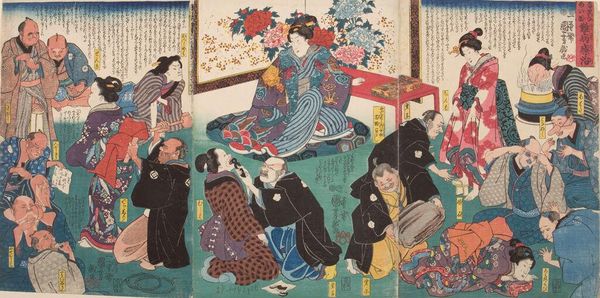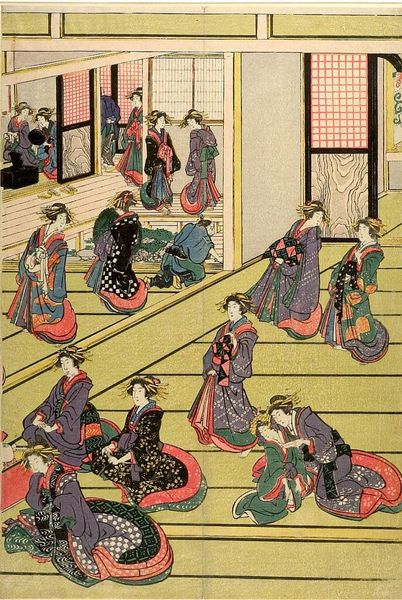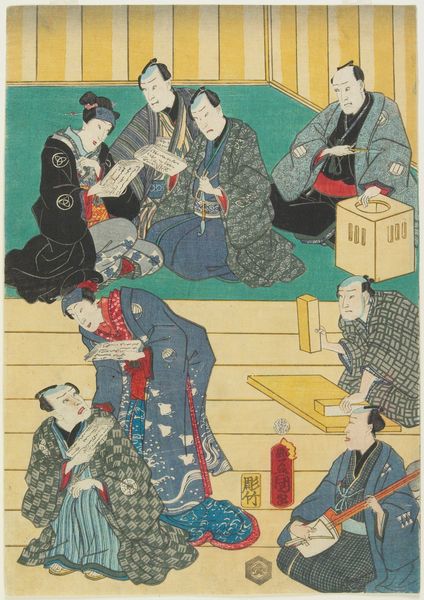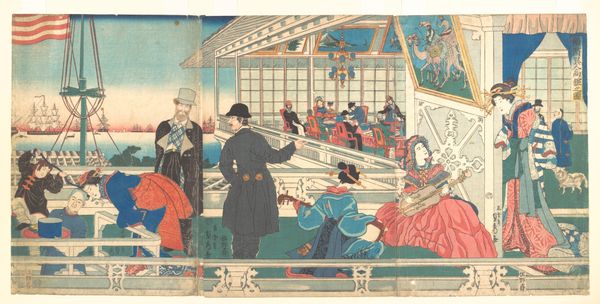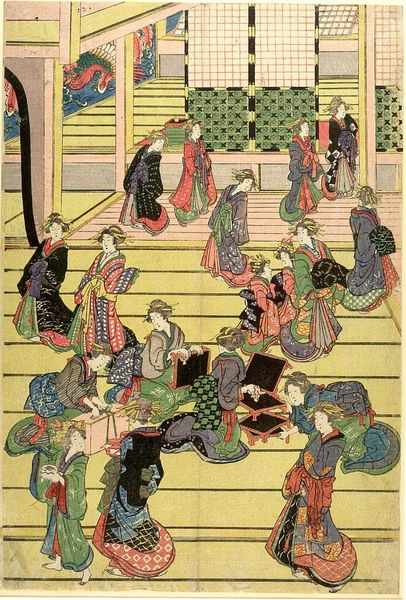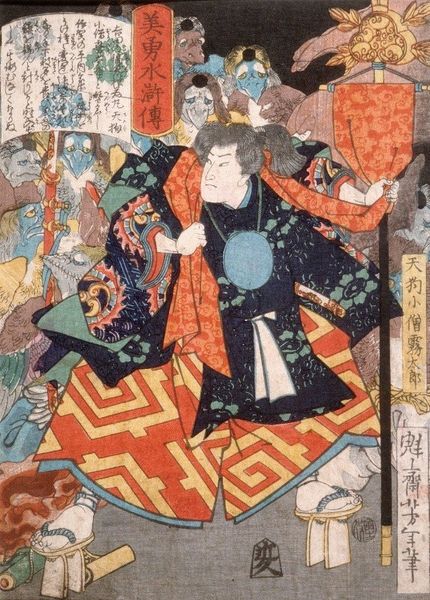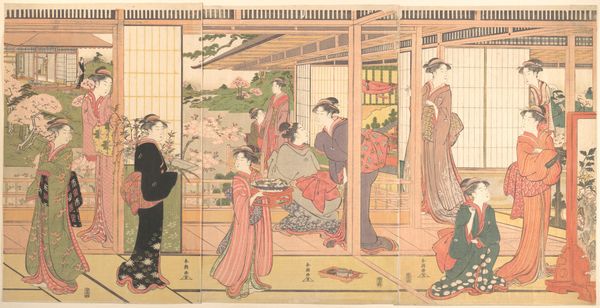
Copyright: Public Domain: Artvee
Tsukioka Yoshitoshi created this woodblock print, depicting Tokugawa Iemitsu receiving lords in audience, in 19th century Japan. The scene captures the rigid social hierarchy of the Tokugawa shogunate, with the Shogun elevated above the Daimyo in a formal setting. Consider the cultural context: the Tokugawa period was marked by strict class divisions and isolationist policies. The visual codes of dress and posture reinforce the social order. The Shogun, in dark robes, sits enthroned while the lords are arranged in strict formation based on their rank. Institutional history also plays a role here. The Tokugawa shogunate had a highly centralized government, and this print reflects the power and authority of the ruling class. Yoshitoshi, working in a time of political change, uses historical subjects to comment on contemporary issues of power and tradition. By researching the Tokugawa period, its social structure, and Yoshitoshi’s biography, we can deepen our understanding of this artwork. Art historians use such resources to unravel the layers of meaning embedded in images like this.
Comments
No comments
Be the first to comment and join the conversation on the ultimate creative platform.

